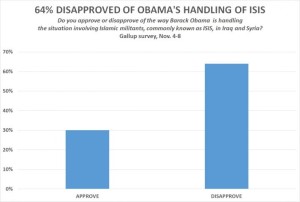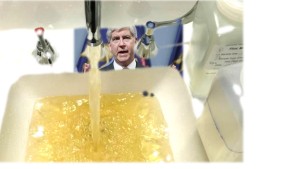“The music Industry can make you feel like a prostitute.” Says Jonathan Davis, the lead vocalist of metal group Korn.
The music industry has a habit of taking talented artists and morphing them into a money making machine. The majority of the world revolves around money and everyone knows this, it is a given. However, when it comes to the music industry what makes the money is the people and who gets majority of the money is the record label. So it is a trend that is seen where talented young women are put in provocative clothing, wearing two pounds of makeup, and told to go on stage and sing a song that has been changed to suit what will sell the best.
Things have become less and less about the talent and the lyrics than about the money that the artist will be bringing in.
The film Beyond the Lights came out in 2014 and besides the love story aspect, it really hit home on this topic. The film stared Minnie Driver and Star Wars actress Gugu Mbatha-Raw, the movie covers the life of a suffering British Pop-star and how she has changed since she first discovered her love of music. It shows her as a young curly haired girl singing Nina Simone’s Blackbird. She goes from a talented to young woman with an incredible voice and a passion for singing to a 23-year-old woman with lingerie and leather hair extensions singing a provocative and highly auto tuned song. Feeling unseen, unloved, and exploited she tries to committing suicide. From this point on she realizes that she doesn’t want to be everything that her producer and record label want her to be. So she removes her hair extensions, fake nails and changes her clothing and she becomes happy again. This movie was all too real for anyone who has undergone the game sort of realization. This is not uncommon, producers have a habit of changing a celebrity to suit what will make the most money and this film was a prime example of how this affects someone’s life.
It may have been a dramatization but the situation still exists in the real world we just don’t see it. We are extremely blinded by fun music and cute outfits we fail to see the what could be going on behind the scenes.
When evaluating the success of musicians in popular outlets like the Billboard Top 100 Artists lists, seven of the top ten artists of the month are female. This is something that is constant throughout the year, that women musicians are at the top of their game. Jennifer Lopez, one of the many women in Billboards list recently spoke out about the dynamic of the music industry. She has been working in the music industry since she was very young and says that to this day the industry professionals value women less than they do men. Which is not surprising because this is a trend throughout the world. However, when you look at the statistics it is hard to believe that the industries top money makers are still respected less and undervalued.
We all know that wage gap between men and women are just one of the many things that set women apart from the rest. Jennifer Lopez recently spoke with W Magazine about her career and is quoted saying “…It’s a man’s world, and, truly, people in a business setting do not value a woman as much as they do a man. I feel like I am constantly having to prove myself. If a man does one thing well, people immediately say he is a genius. Women have to do something remarkable over and over and over. And, even then, they get questions about their love life.” Being an important woman in the industry for more than a decade she knows this sort of misogyny for herself, even if it isn’t realized the workplace is male oriented. After releasing this statement J Lo was scrutinized because later on that week she released a song that was produced by Dr. Luke.
Luke’s name may sound extremely familiar due to the fact that his court case with Kesha is plastered all over the news. Almost everyone knows who Kesha is when they think of Tik Tok and the very memorable line of brushing her teeth with a bottle of jack. However other than this court case many non-music aficionados wouldn’t recognize Dr. Luke’s name or real name Lukasz Gottwald. And no he is most definitely not a real doctor. He is a guitarist and music producer for many large Billboard artists such as Kesha, Kelly Clarkson, Katy Perry, Ciara, Miley Cyrus, Jennifer Lopez and many more talented women. Many of these women, such as Jennifer Lopez and Ciara were scrutinized for releasing music recently that was produced by Dr. Luke and Kemosabe.
When talking about the inequality in the workplace for women the music industry is a prime example. The Kesha Vs. Dr. Luke scandal is a sexual assault case that is pretty much a prime example of the misogyny in the music industry. What J Lo said was correct; we live in man’s world. A world where we question a young girl’s accusation of sexual assault against someone who holds power in the music industry and where accusations of rape are not taken seriously.
Sexual assault in the workplace has been recognized as a problem since the 1970’s, over the years it has been recorded that sexual assault is the most frequent cause of death among women. It is hard to record due to underreporting but the estimated prevalence rate of rape and sexual assault is 30% among adult women. Kesha recently created a blog called “The Industry Ain’t Safe” for women to anonymously share their stories of sexual assault and harassment in the music industry.
So why is it that he is currently winning the case? Is it because he is one of the biggest producers in the industry? Is it because Kemosabe needs him? Or is it because he is owned by SONY?
Kesha’s legal battle has been rough, trying to win a case against a label as big as Kemosabe which is owned by SONY is not an easy case to win. Kesha Serbert is suing Dr. Luke and the record label associated to break free from her contract. She signed a six album contract with Kemosabe Records when she was round 16 years old and is accusing Dr. Luke of drugging and sexually assaulting her over the past 8 years. As well as controlling and psychologically abusing her. However, this case is geared more towards escaping her contract rather than incriminating Lukasz.
In her most recent court ruling Kesha was denied a primary injunction which would have allowed her to record her own music outside her contract. She was denied freedom from someone who drugged her and sexually assaulted her for years, someone who is 20 years her senior and someone who turns to twitter to preach his plea (shown above.)
This is not the only time Kesha has spoken out about her abuse, in 2005 when Kesha was 18 he drugged and raped her at her hotel room after a Nicki Hilton’s birthday party. Because she was intoxicated and because it was 11 years ago makes this invalid even when her mother has proof.
As Jennifer Lopez said women aren’t valued the same as men, in any industry. Clearly we can see this, when Kesha has been assaulted for years and has statements on multiple of these instances along with phone call evidence and eye witnesses it is not enough for her to win. It is not even enough for her intentions to be believed. Many sources believe that she is lying and has been lying for 11 years to break out of her contract. Dr. Luke’s attorney spoke to Billboard (who is owned by SONY) and gave them this statement, “Kesha’s court filings are and have always been a transparent business ploy to pressure Luke into a more favorable and lucrative contract.” Why would this young woman invest 11 years of her life to a lie, and why do we feel the need to question her allegations.
There is a stigma about sexual assault and rape that we need to change, we cannot continue to let this happen. Let Kesha inspire you to take a stand as she has done for so many others, she is not the bad guy in this situation. When it comes to sexual assault and rape 8% of all rapes occur in the workplace and eight out of ten times the person is not a stranger. When it comes to the workplace it often occurs between someone of power and someone of lower standing and 91% of the time the victim is a woman.
With these statistics why should we question Kesha’s accusations, she is a woman, he is in a higher position than her, and he raped her multiple times. That is all that we need to know. Women in the world are lacking a sense of credibility when it comes to this topic. We see it time and time again. There was a time when women didn’t have the right to vote it seems like we have come a long way since then but have we really?
Women need to come together, since Kesha’s case was made public female celebrities have come out to speak on their experiences and to show their support. They have donated their money and created #freekesha. Even Kesha herself is helping other women come out about their abuse on her blog.
While there might not be a lot we can do about individual opinions in regards to powerful people (such as Judges) we can come together as a community to support fellow women so they get the respect that they deserve and not tolerate these situations again.
Unit III Reflection:
- Because my lede isn’t as straight forward as it would be to an essay my title sets the stage for what people are going to be reading. Without the title the reader wouldn’t know till the fourth or fifth paragraph that I am using Kesha to prove my point. My lede gives the basis of what I am trying to say throughout the article.
- Using a quote to open my article before the introductory paragraph grabs the readers attention, and sets a precedent for what the next paragraph will be like. The first paragraph doesn’t give too much a way but also doesn’t read like an introductory to an essay, it gives some small background and to the industry.
- My idea that is constant throughout the piece is inequality and sexual assault in the workplace, and with that I bring to light a lot of points that I found in my research that a lot of people wouldn’t normally think of. As well as comparing to things relevant in the world right now.
- The sentence structure and word choice found throughout my article are subjective to my unique brand of writing. I thought out my ideas and points before putting them to paper to make sure that the reader would not be confused when interpreting the article.
- I brought up unique examples that the regular NYTs reading wouldn’t think of on their own. I avoided cliche ideas on inequality and brought attention to the facts so that they are unable of challenging these ideas. I organized it in a way that was able to keep the readers attention by adding quotes or examples from current events.
- As the writer I definitely had my own point of view towards this controversy and it is evident in my writing, I used the research I found in many ways to not only persuade the reader but also to inform the reader enough to make our decisions.
- I did an extensive amount of research on this topic both during this unit and last unit. Finding a way to specifically include it into my article, while they might not be hyperlinked they were all used to help me complete my writing. I used a visual that included text examples of tweets that I referenced in the article.
- I used my secondary sources a source of information to fill in the blanks, a way to add context to the article and information for the reader. My primary sources helped me make the connections on sexual assault in the workplace. While I did drop a quote of two in my piece they were quotes that helped my article grow and reach out to both younger (J. Lo) and older ( Jonathan Davis) readers.
- I persuaded the audience by informing them and showing them points of view that they might not have otherwise noticed. I didn’t only use my side I utilized the view points of others in the industry.
- I chose a visual that pertains directly to the two paragraphs surrounding it, it is a picture of Kesha leaving court and then two of Dr. Luke’s tweets that I briefly mentioned. It is interesting because it is not just a picture it has more to it and it makes you read. It provides the reader with a little bit of a break and an interesting to visual to what I was saying at the time.
- The many drafts I did really helped me finalize my piece along with the help of my classmates. The first draft, while small I wasn’t sure how to start or where I was going with my points, it was very choppy and all over the place until the second draft or third draft when everything started to come together. With suggestions and critiques from my peers I was able to finalize my article.
- It was hard to use hyperlinks because it was hard to really reference my sources, however when I did I gave direct links to magazines they could look themselves for the information or similar information.
- My word choice, sentence structure and choice of grammar added to my article and I believe gained credibility with use of my many sources.






